Hidden Treasures of NRW: Bad Lippspringe
Since I moved to Germany, I have been noticing that many towns in Germany have the word “Bad” in their names (Bad Meinberg, Bad Driburg). My first thought: what is so bad in these towns? Now imagine my confusion on learning that “bad” actually means “bath” in Germany. My curiousity led me to aunt Google, who didn’t disappoint me! Apparently, towns which contain a medical spa and are approved by the national authorities can have “Bad” in their name. This official designation may also be suspended if a town fails to maintain the required standards. This HAS to be one of the most German things I have ever seen :) I found this creative and I decided to explore a “bad” town in NRW!
Now I can make up a fancy reason to tell you why I chose Bad Lippspringe to visit, but in the spirit of keeping this blog honest I will tell you the real reason: this was the closest “Bad” town that I could explore on a busy Saturday. Bad Lippspringe is a small town 10 km North-east of Paderborn (a 20 minutes long bus ride through a very scenic route). It is a spa town known for its excellent climate and “spring water”.
The Lippequelle is at the heart of Bad Lippspringe, surrounded by a beautiful park and in the shadow of the ruined castle of Lippspringe. The spring is the source of the river Lippe (quelle is the German word for “source”) and its depth is about 8 metres. With a discharge of around 740 liters per second, it is one of the strongest pouring river springs in Germany. The deep blue spring pond is popularly known as “Odin’s eye”. The legend says that the almighty Germanic father of gods Odin tore out his eye and threw it into the landscape to bless it with flourishing life. I had read online that you can observe the beautiful blue colour of the spring on a clear day, but having lived in Germany for long now, I know better than to cancel plans due to it being cloudy (Sun is a rare and fickle visitor here). So I went anyway and I think I was pretty lucky.
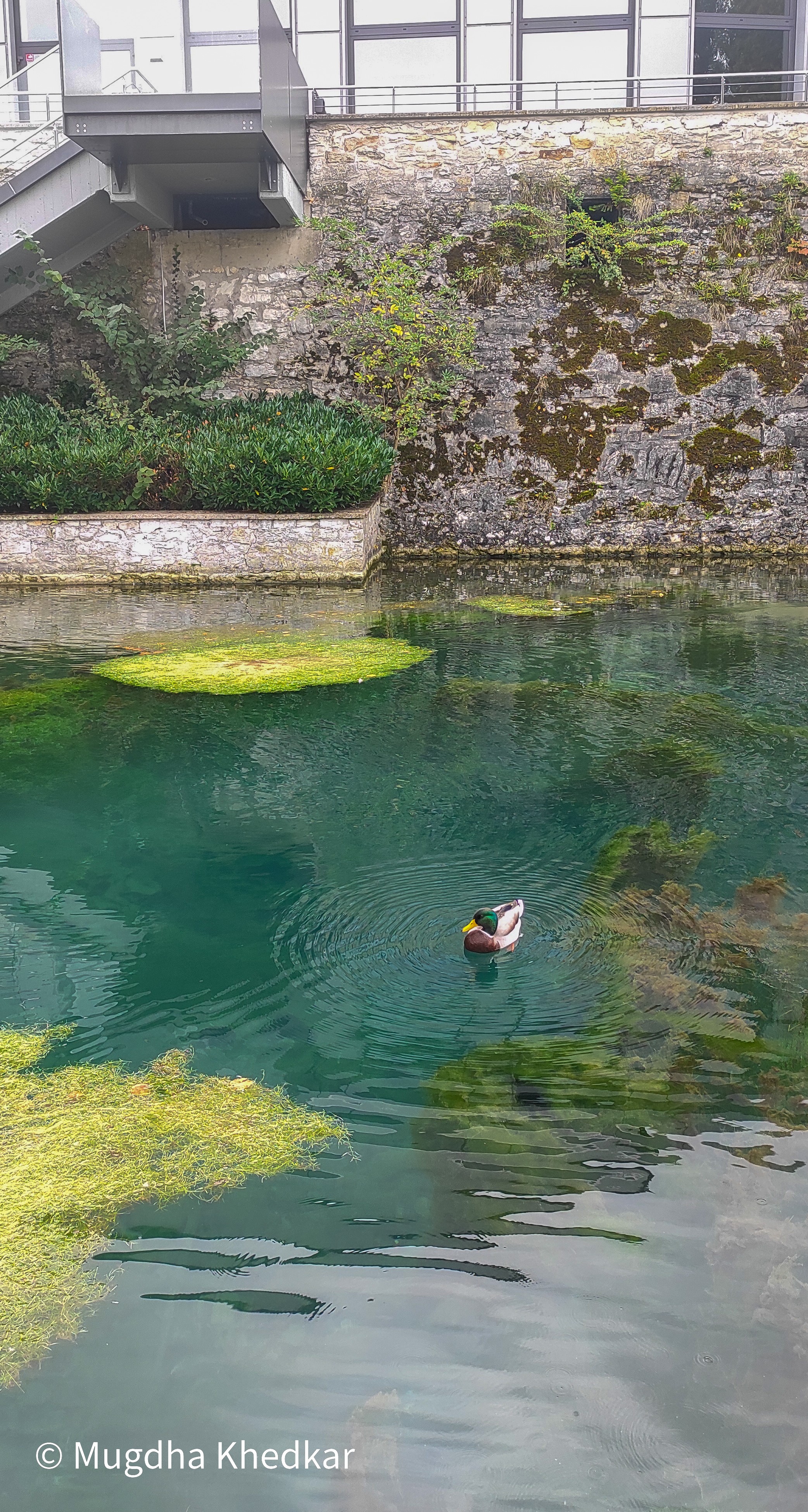
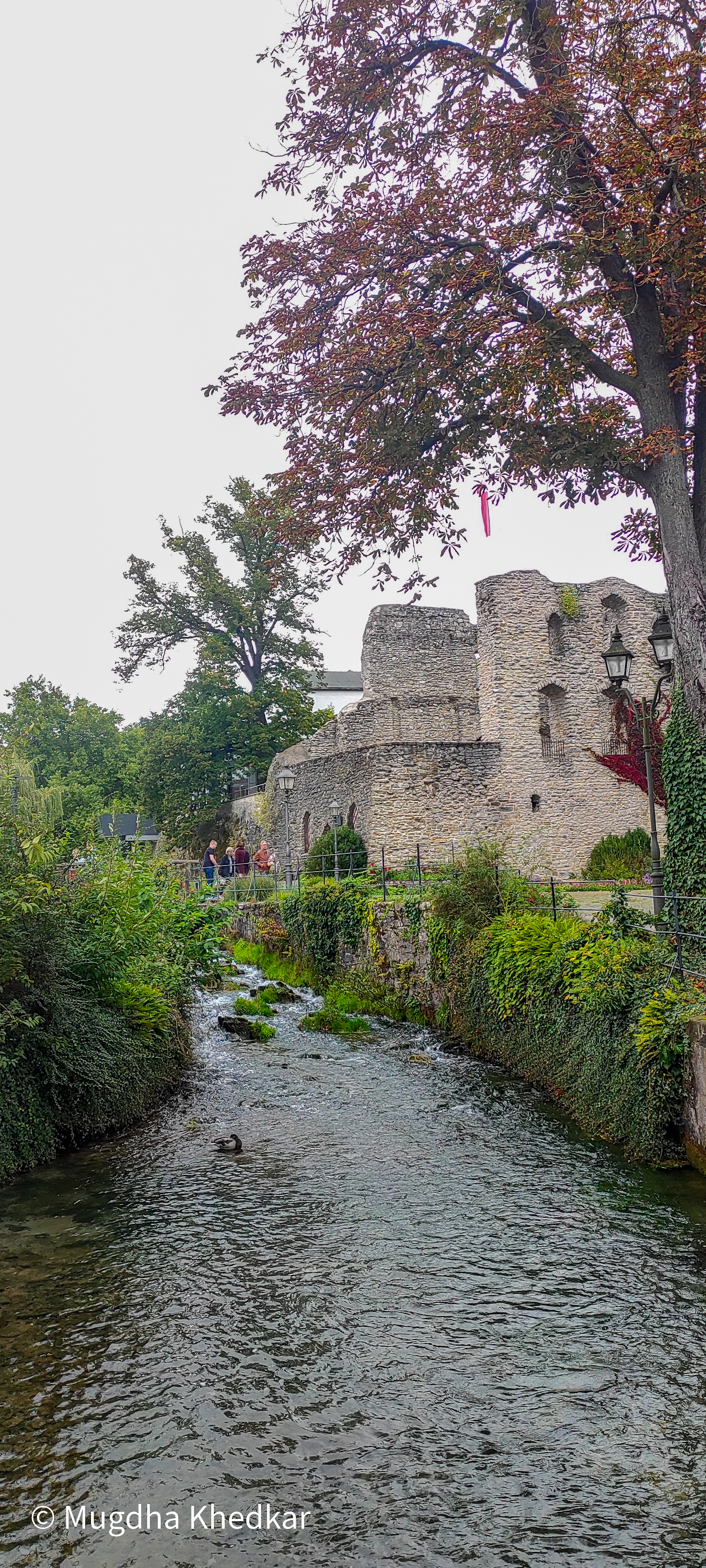
After being born from the spring, Lippe runs westward for about 220 km and finally enters the Rhine at Wesel. Apparently Lippe (named Lupia) was an integral part of the Roman history. For the Romans it was a gateway to Germania, running from the river Rhine to the region around Paderborn. The watercourse was used for transport of supplies, so along the banks of the Lippe many former Roman camps can be found. In the last 200 years many of these camps have been identified.
I decided to follow Lippe for sometime. It was amusing to see how little and cute the river was just when it was born from the springs. It slowly curved and entered a residential complex until I could find it no more. There is something extremely fascinating about the small rivers here in Germany but I still can’t pinpoint what it is. Some of these rivers are very narrow most of the time and pretty wide at some places. I don’t know what gives these rivers a green colour (maybe algae) but that colour is very unique.
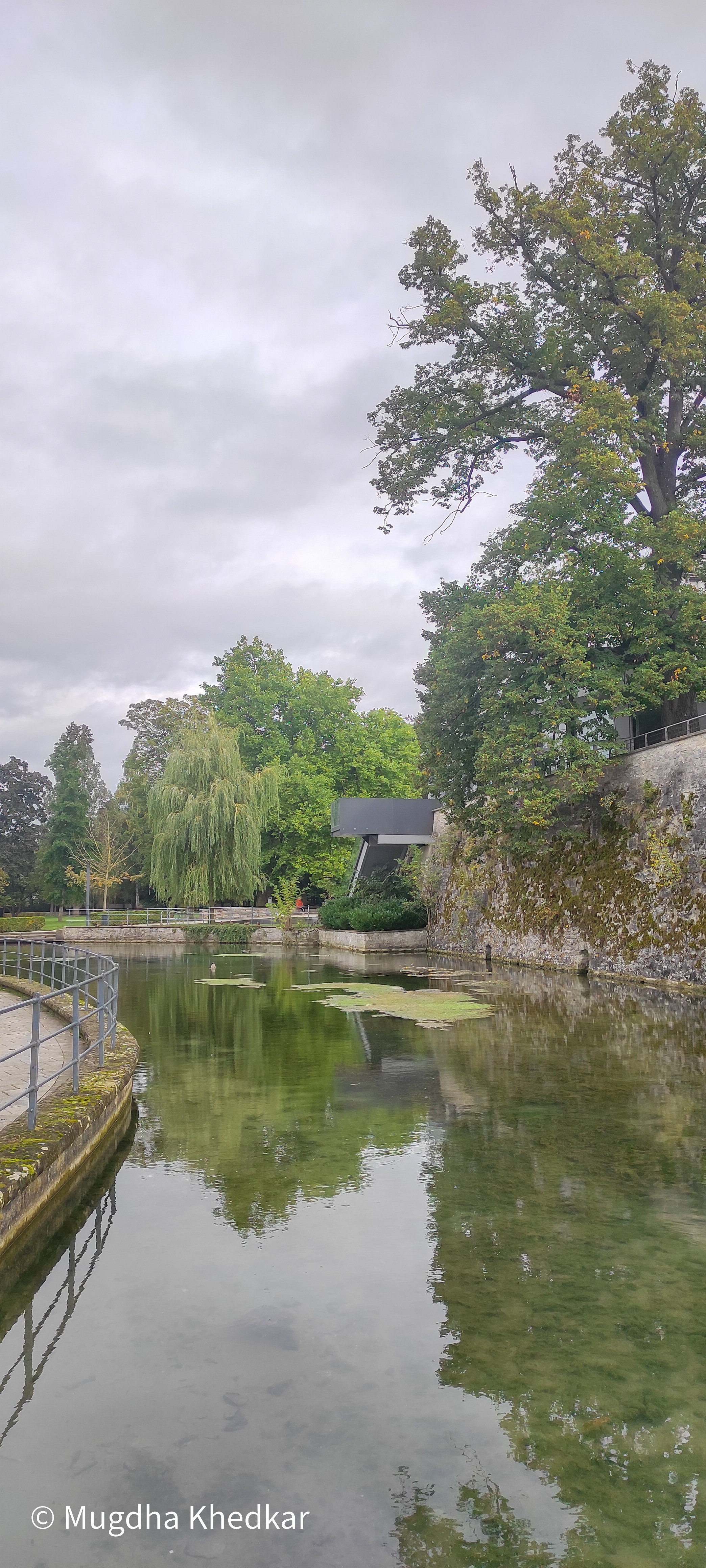
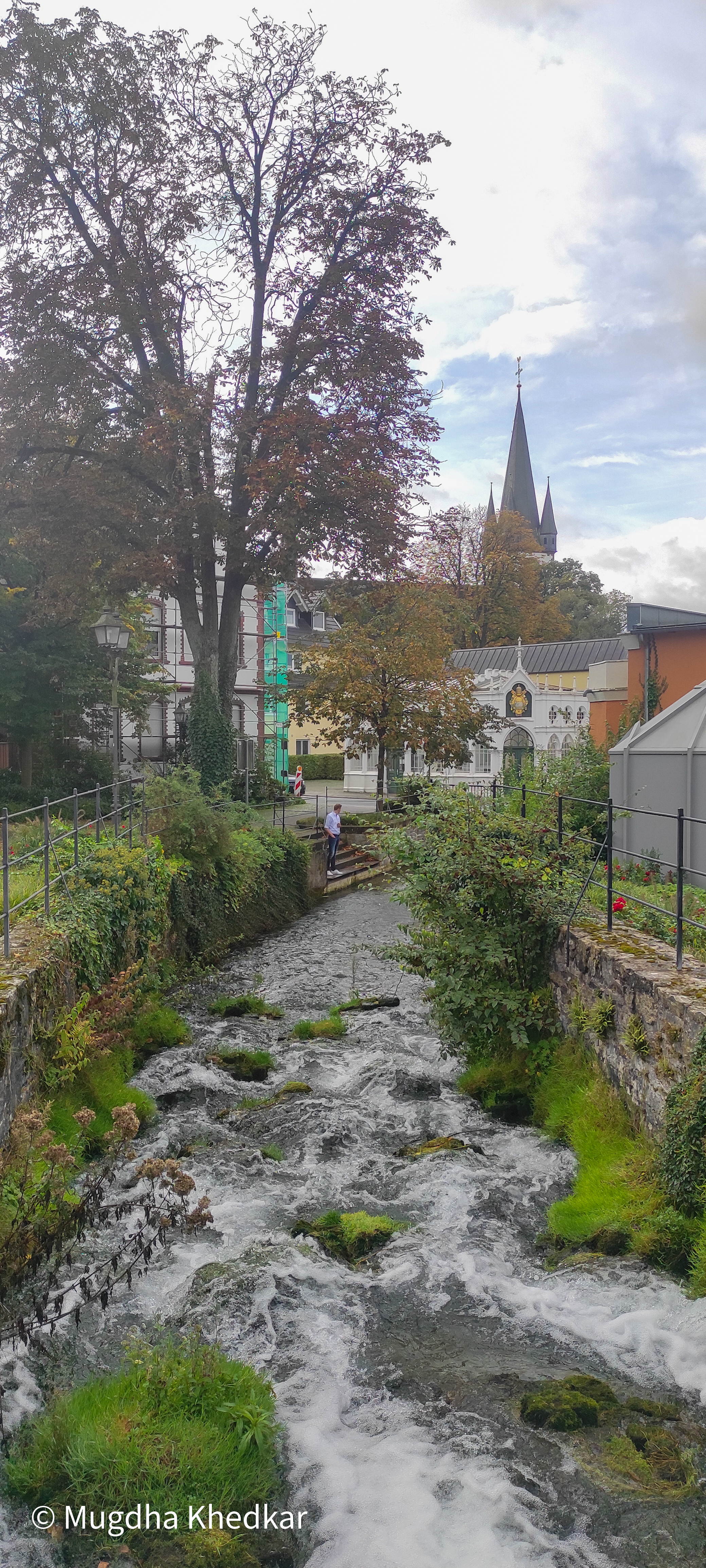
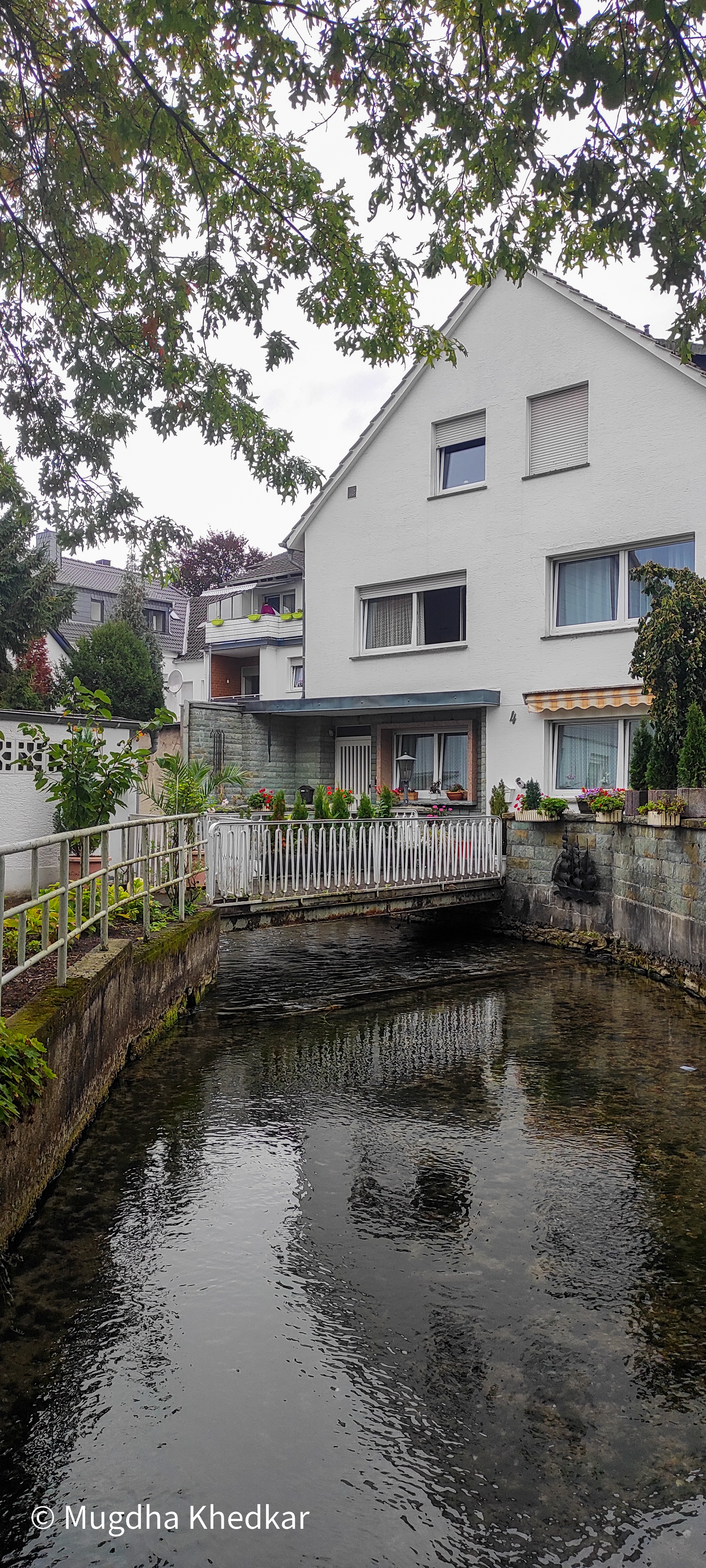
Lippe isn’t the only spring in Bad Lippspringe. The oldest healing spring is the Arminius spring discovered in 1832 near the castle ruins. The water from these springs is particularly suitable for “drinking cures”. It was easy to see how Lippspringe got the “bad” status from the Government and I was not surprised that it managed to retain the status since so many decades!
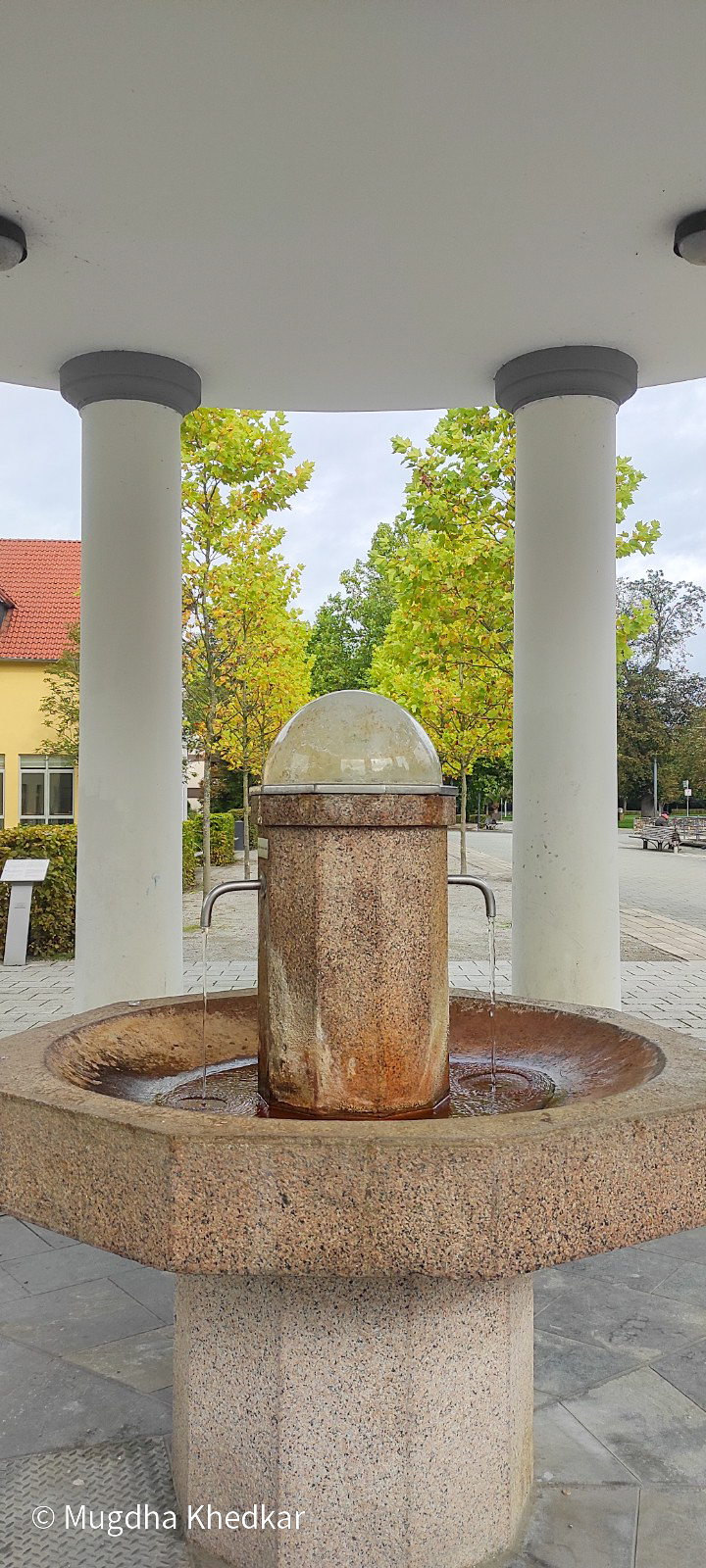
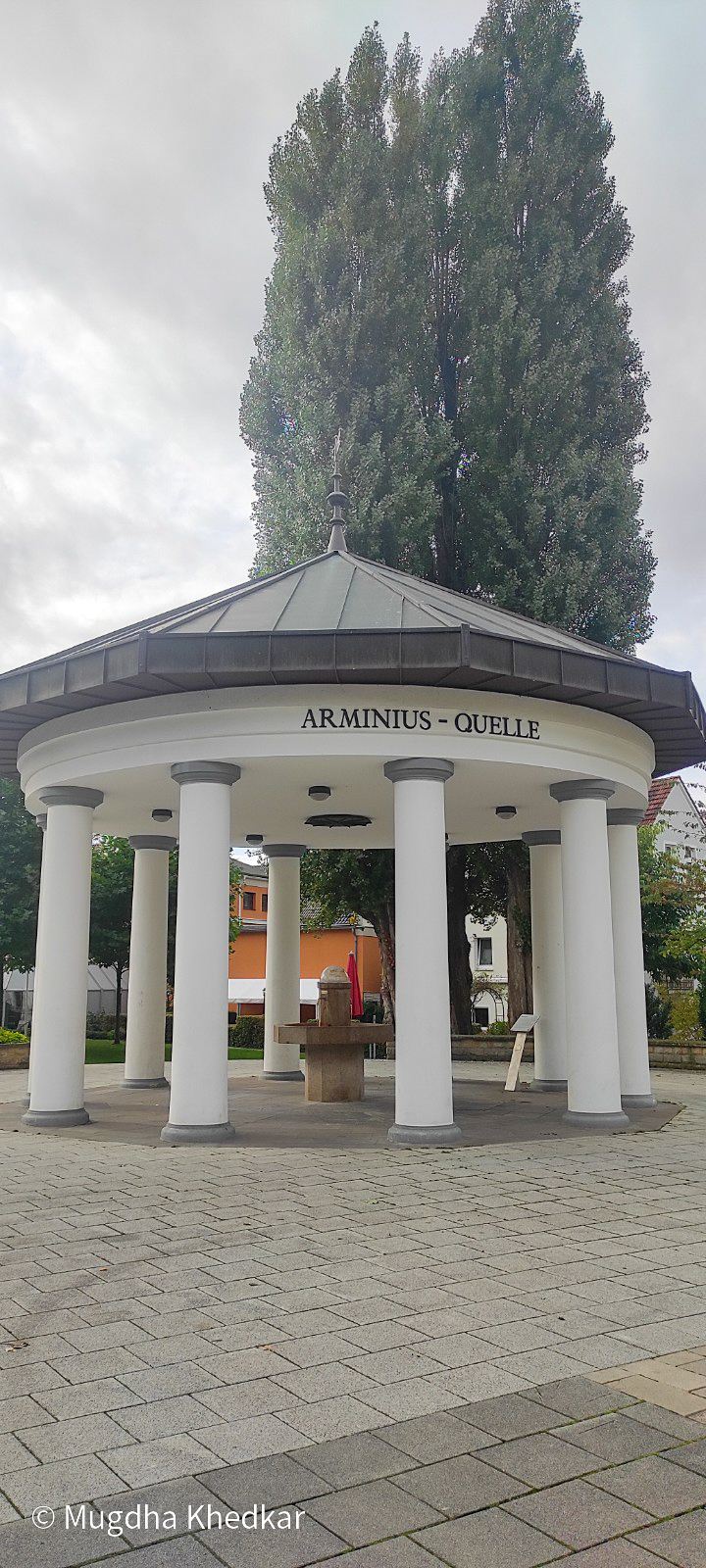
There were a couple of more springs which led me to a beautiful Catholic church, St Martin. The architecture really stood out, because it wasn’t very similar to the architecture of most churches in Germany.
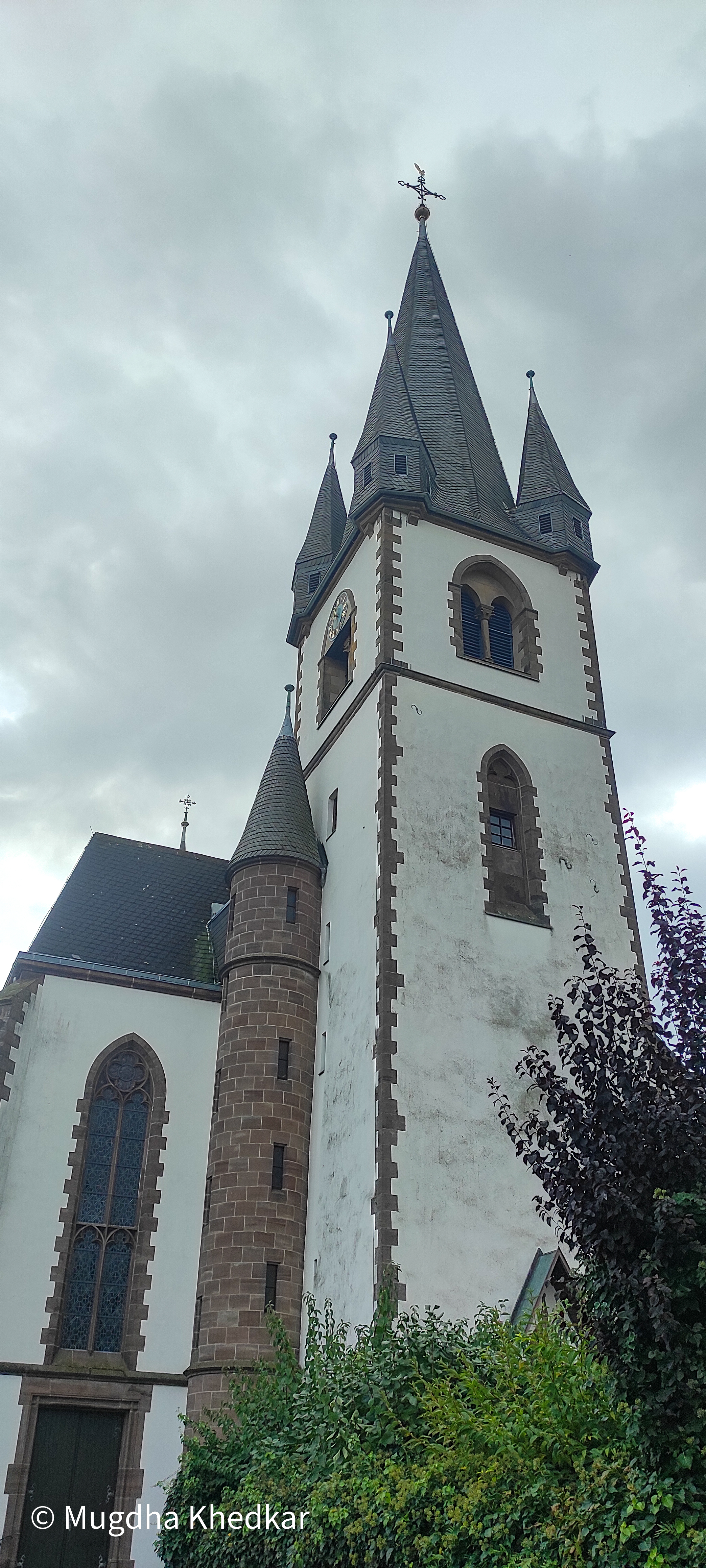
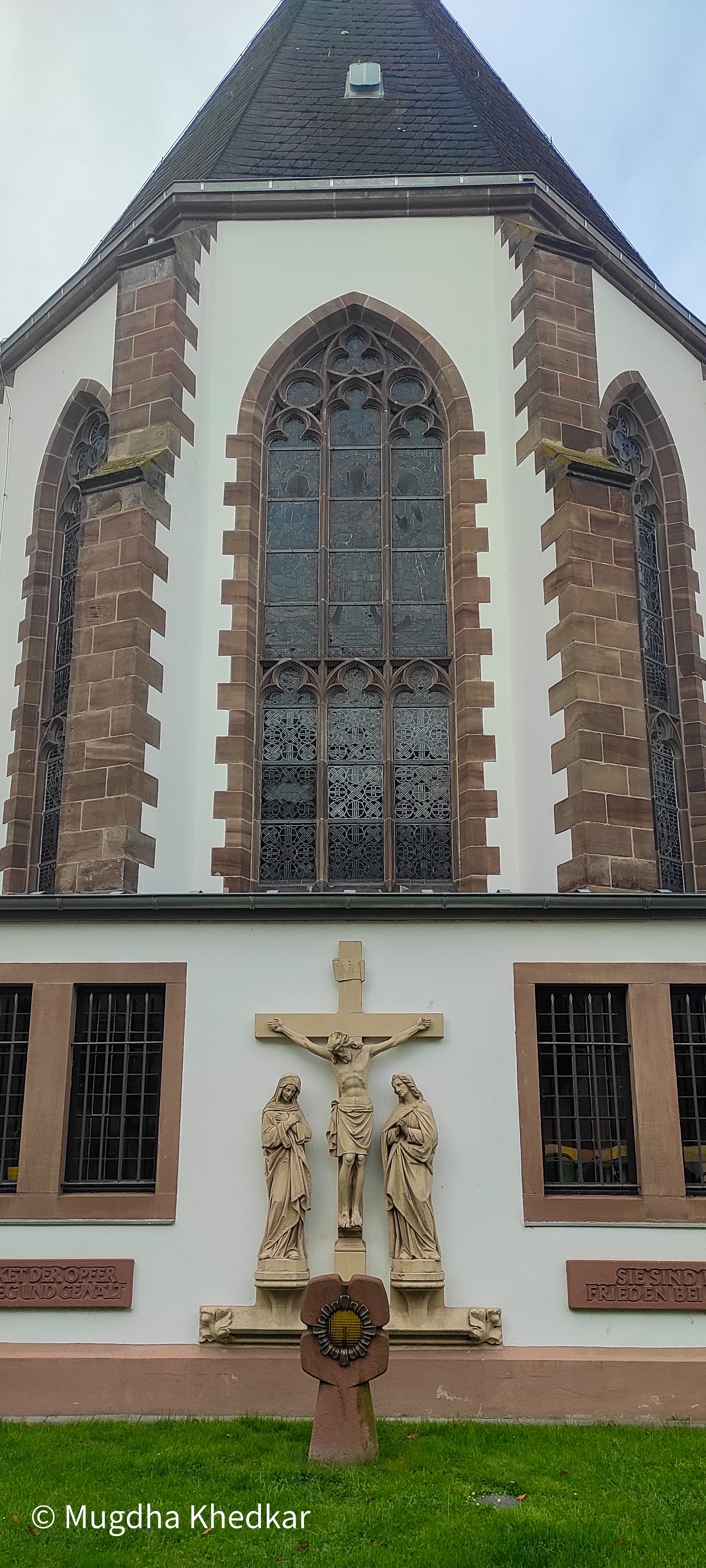
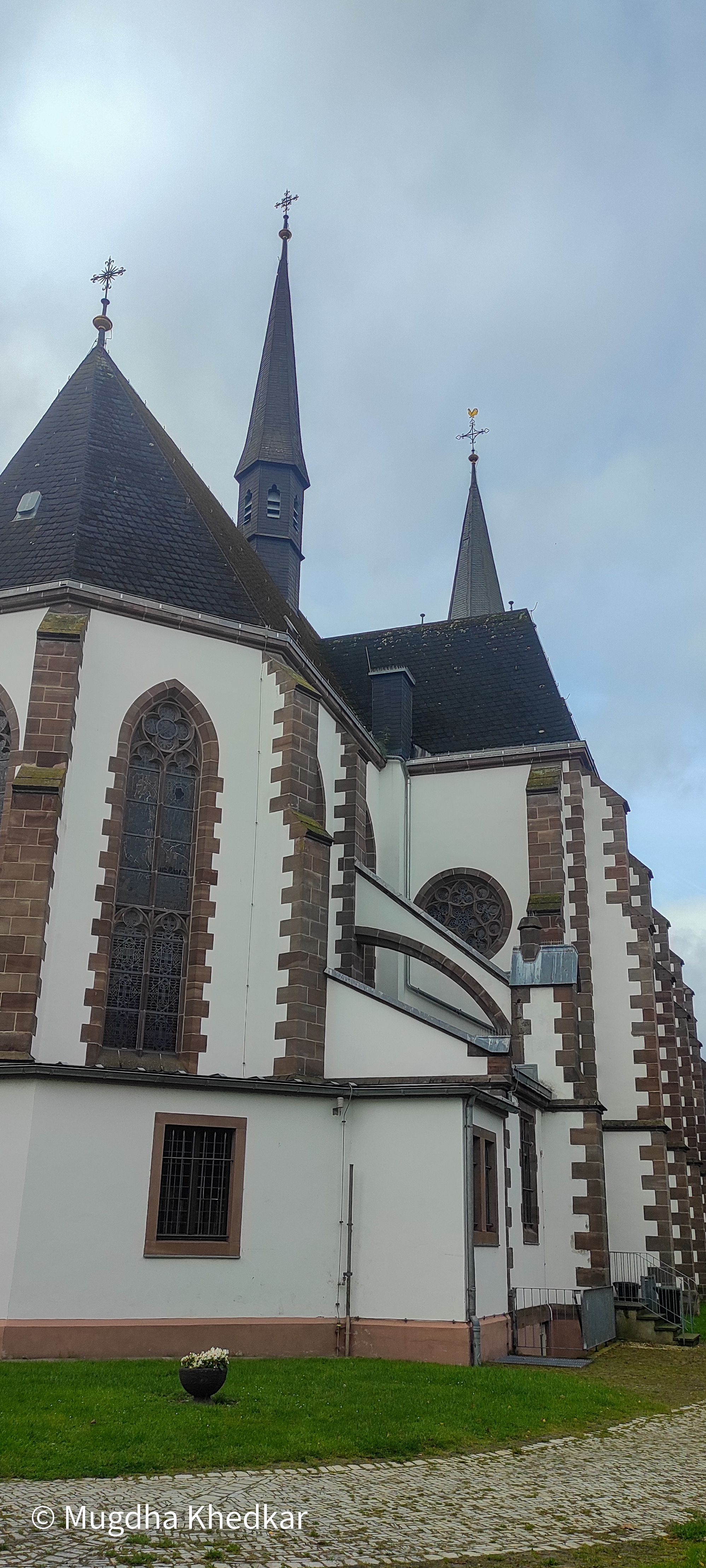
I had a nice time exploring the small lanes around the church. Each lane was decorated with half-timbered houses and I kept exploring them till I almost got lost (lost my way and track of time, too). Apparently Germany is one of the only countries where half-timbered houses are still so common. I feel like they really add a very antique look to any landscape. They seem to transport me to a much calmer and simpler time..
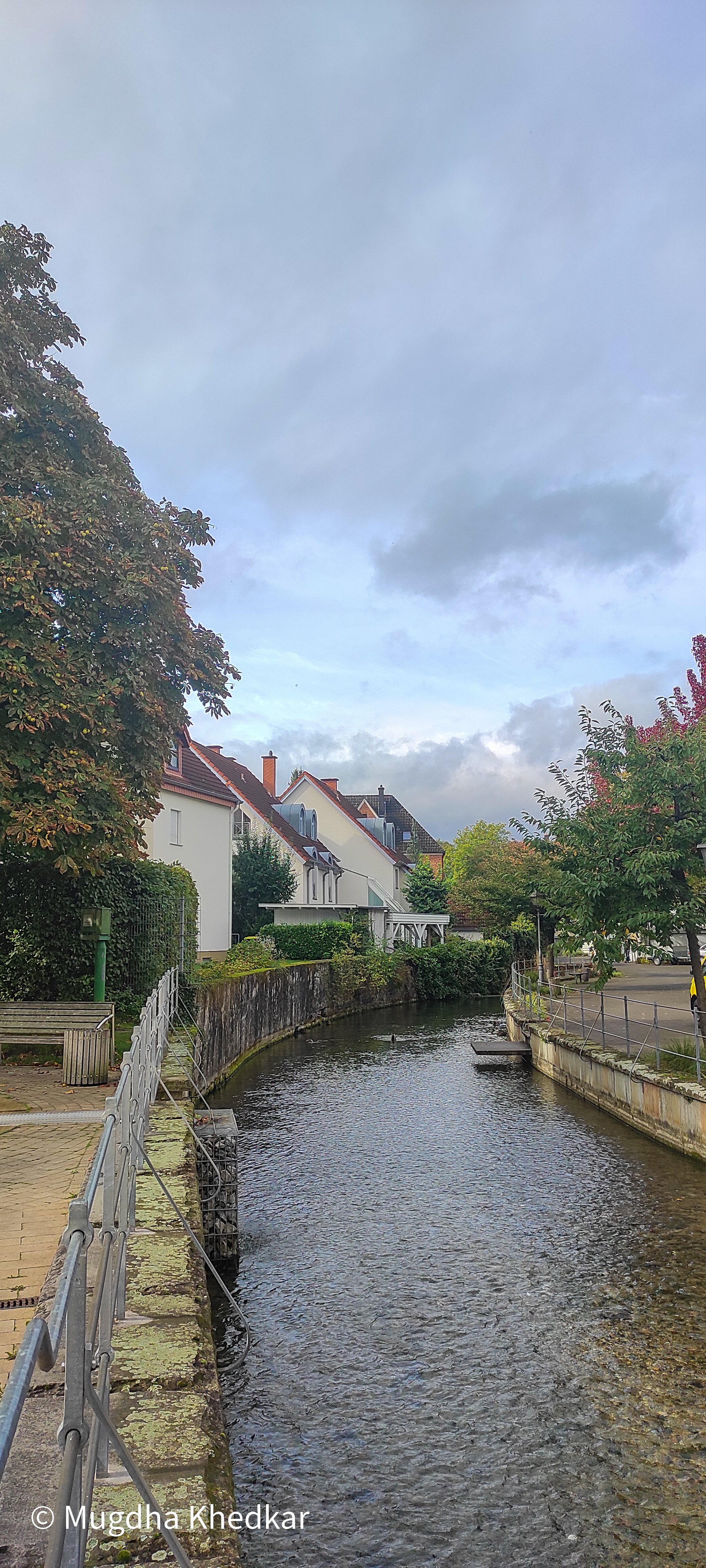
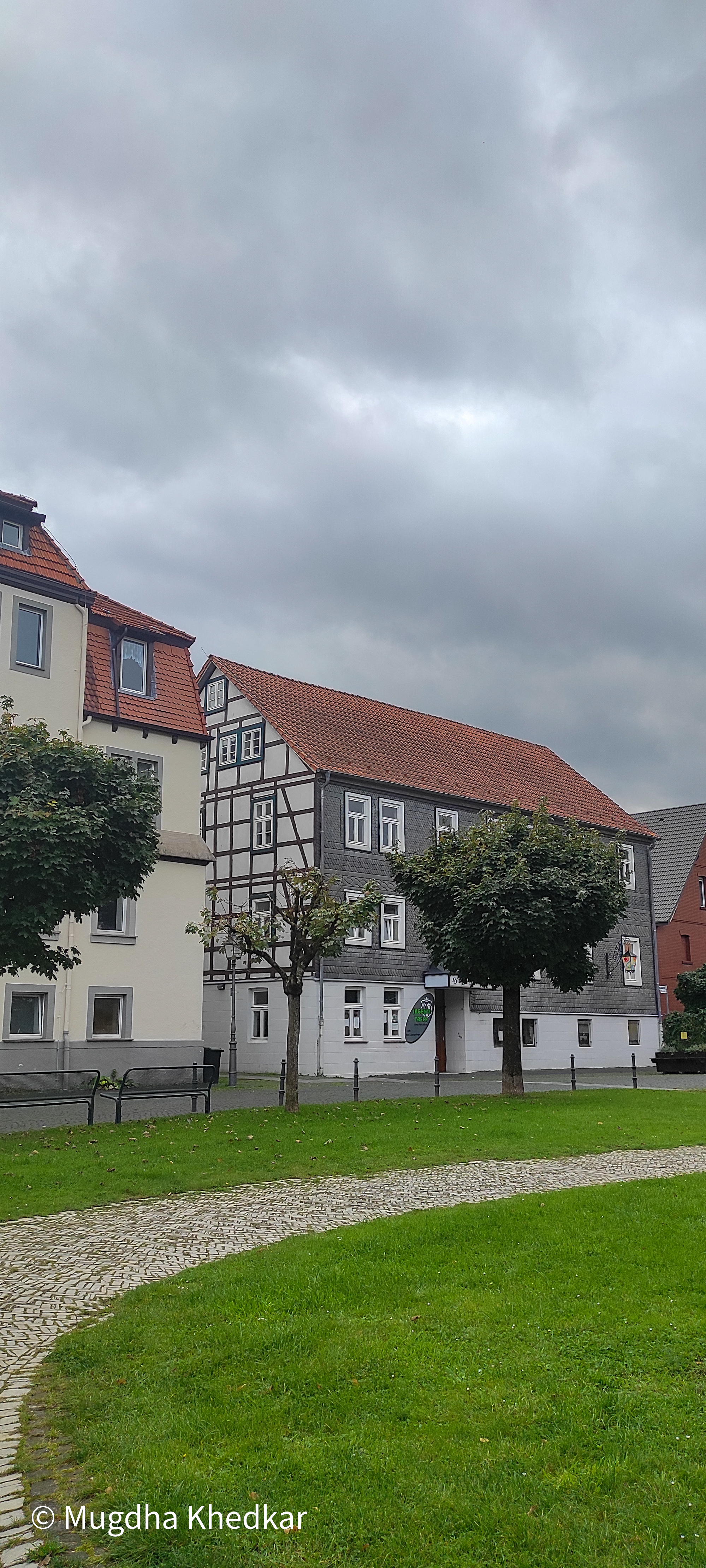
Most little towns in NRW introduce me to a very different part of Germany. While some are ruins of the tragic World War II, some are of geographical importance. Every town has its own essence and it is very refreshing to walk through them listening to your favorite songs and imagining how it would be to live here, in this eternal beauty of NRW.
Interesting fact: Today is German Unity Day. On 3rd October 1990, the East and West Germany were unified, becoming a single state for the first time since 1945!
